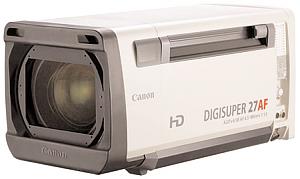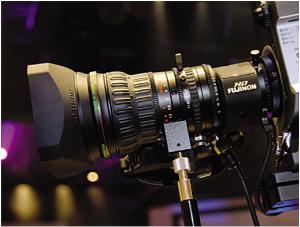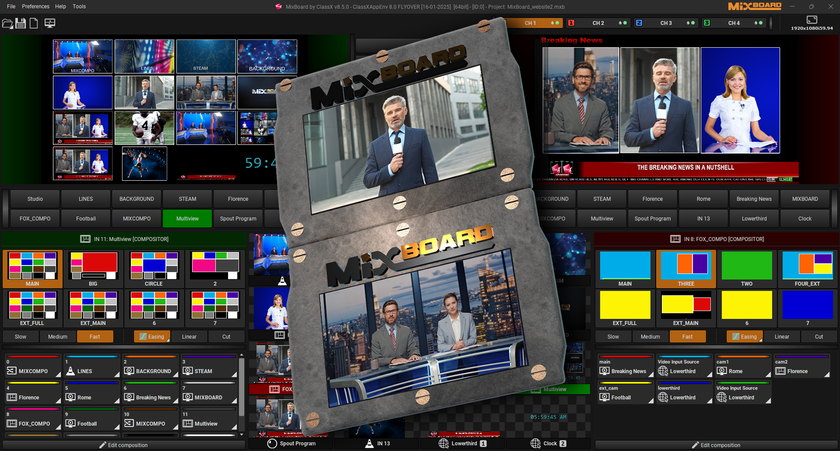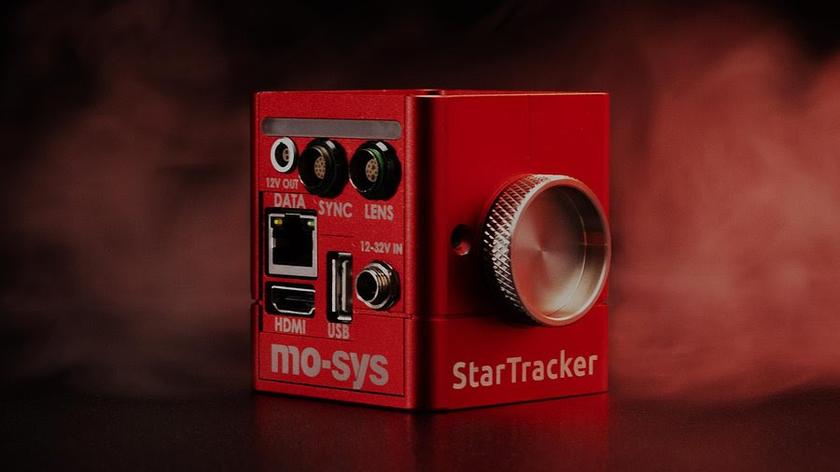HD Lenses: The Cream of the Crop

Canon's Digisuper 27AF HD lense.SEATTLE
There's a strange dichotomy going on in the television production business right now: while the general business climate dictates watching every nickel and dime being spent, broadcast lensmakers report that they're still doing a good business in their top-of-the-line, expensive, studio lenses.
It's a well-known, and well-proven fact that the final video image is only as good as the weakest part of its image path, from the lighting, scenic design and makeup on the set itself, through the lens, the imagers and processors in the camera, through the recording, post production and mastering process. To get the best images, every step of the process has to be top drawer.
Which leads to the customers for these high-end studio lenses. "These are people who are making the investment for the ultimate in HD, and they want top-of-the-line lenses," said Larry Thorpe, national sales executive for Canon Broadcast & Communication Division. "That's the sort of level that we sell them to—someone who really wants the best." That type of customer is making big bets on the success of their productions. "The big box lenses [are being sold] primarily to the networks, sitcoms, some PBS stations… and a few into large churches," said Dave Waddell, marketing manager for Fujinon. "It's where quality is really the number one issue, instead of budget."

The Abundant Faith Living Center recently purchased a new Fujinon HA18x7.6ERM Premier Series lens for its newly constructed facility. The lensmakers said that customers at that level do long and careful evaluations of the premier lenses, with side-by-side shootouts to determine which one is the best for their particular needs. If they're going to be paying upwards of $70,000 for a lens, they're going to make sure it's worth it.
PROOF IN THE NUMBERS
Which raises the question, why do these studio lenses cost so much? You can begin with the fact that economy of scale goes out the window on this type of lens. Where a lensmaker may sell tens of thousands of any particular model of its ENG lenses, and perhaps hundreds of thousands of lenses affixed to consumer-grade camcorders, the market for top-tier studio lenses might be in the hundreds. So the design and tooling costs for these lenses can't be spread over thousands of units.
Because cost, in relative terms, is no object for these lenses, the designers really do start with a blank sheet of paper. Their object is to transmit the greatest amount of light through the lens, optimizing resolution, color resolution, contrast, and subduing or submerging optical aberrations. Thorpe noted that Canon's top studio lens has three dozen elements, fashioned from 20 different kinds of glass, each with its own optical properties.
The bigger the lens elements, the more light they can pass. This not only benefits the users in low light situations, but the wide f/stops these lenses can open to provide a smaller depth of field, which can be beneficial in making talent look their best on a close-up.
Using more optical glass elements in a lens provides more arrows in the designer's quiver. "[He can] optimize all the good image quality parameters, while minimizing all the tough optical aberrations, and there are many," said Thorpe.
MORE IN THE MIX
The downside of all those glass elements is that a great deal of light is lost to reflection as a light wave passes into and out of each piece of glass. The simple laws of physics dictate a 4-percent light loss at every glass element to air surface: 4 percent going in, 4 percent coming out. The more optical elements, the more light lost to reflection. The compounding effect of that 4-percent loss means that a lens with 30 elements would have an over 90-percent loss of light due to reflection.
To combat such light-consuming reflection, lensmakers have developed exotic optical coatings, which have to be applied in multiple coatings to handle different wave lengths of the visible spectrum. The coatings themselves, plus the application process, multiplied by more elements, raises the cost of the lens even more. (One additional benefit of the optical coatings is that they also reduce or eliminate the ghosting or glare from stray light coming into the lens from off-axis.) In addition to using more expensive glass, more and larger optical elements, the cost of the lens rises further because of the higher finishing specification, where each element is ground to perfect smoothness measured in nanometers.
If you have more optical glass elements in a zoom lens, you need more hardware within the lens box to hold and position those elements. "The servo system's much more sophisticated," said Waddell. "The servos are much faster in these lenses."
Another effect the lensmakers fight in the mechanics of a lens is so-called "breathing," where the apparent focal length changes slightly as the lens is focused.
Even in tight financial times, studios that have spent millions on the quality of their video images have seen the value in buying the best-of-the-best lenses, at a pretty penny.
Get the TV Tech Newsletter
The professional video industry's #1 source for news, trends and product and tech information. Sign up below.













